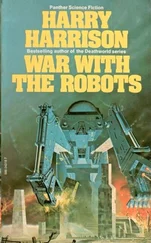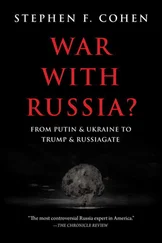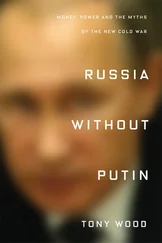Luzhin, after the inevitable—and procedurally correct—radio call to headquarters, recognized that he had no alternative but to comply and took himself off to his office to drown his frustration.
Vronsky, meanwhile, accompanied by Senior Warrant Officer Dimitri Prokofitch Razhumikin, his Ops NCO, conducted a reconnaissance of the immediate vicinity of the compound based on a careful study of the map and aerial photos he’d brought from Kaliningrad. The ground suited his purpose admirably. The most likely route for the enemy approach was from the direction of the forest, to the north of the perimeter. It would give the terrorists the best cover and get them closer to the command bunker. His deduction that this was their target was further reinforced by a report from HQ that a drone with forward-looking infrared had picked up a heat source in the forest five kilometers north of the compound.
“That’s it,” he said to himself. “The bastards are on their way… and they’re not getting away from me this time.”
An hour after finishing his recce, Vronsky gave orders to his team to allow them plenty of time to get into position.
“Listen in guys and welcome to Operation BORODINO,” he said to the Spetsnaz team, assembled by Razhumikin in the Guard Force conference room. “First, the preliminaries. You’ve been split into four groups: Gun Groups One and Two, each equipped with the PKP Pecheneg, 7.62 millimeter light machine gun and AGS-30, thirty-millimeter grenade launchers, plus normal small arms and grenades; next is the Korda group, equipped as you’d expect from the name by one of my favorite weapons, the Korda 12.7 millimeter heavy machine gun—a beauty which got me out of trouble in the second Chechen war several times. Finally, there’s the reserve group. Note, too, that I’ve marked the map with a number of named spot points to avoid having to send grid references.” He paused to allow his men to take notes and check their maps.
“Mission: capture the British infiltration team as they move forward to conduct a reconnaissance of the compound. I won’t say more about that, as Senior Warrant Officer Razhumikin gave you the intelligence picture previously. The key point I want to make is that I want the British officer alive. We’ll do it by surrounding the team on all sides with a curtain of fire. On my order, the reserve group will move in and take them prisoner. Do what you need to do to subdue them, but the President wants the officer alive and looking photogenic on TV. Moving on to tasks. Gun Group One, you are to set up the unattended ground sensors along the southern edge of the forest line to pick up the intruders as they head toward the minefield. On my order, you are to engage them from a position you are to recce and prepare on the southern edge of the forest line.
“Gun Group Two. You are to act as cut-off group, ready to engage them from a position in the scrubby area northeast of the minefield, here. Again, recce and prepare a position that will prevent any escape from the killing area.” And he indicated on the map where he wanted them located.
“Next, Korda group. You are to set up in the watchtower on the perimeter fence, here. You are to engage the enemy on my order—and I plan to be in the tower with you—as they move into the killing area. For all of you, the Korda opening fire is your signal to engage.
“Finally, my reserve group. I want you ready to move out from the back gate of the perimeter fence to capture the enemy on my order, when they’ve been neutralized.”
Then he concluded, “If they do what I expect them to do, they’ll enter into the killing area we’ve prepared for them and be trapped between the minefield and watchtowers along the perimeter fence and the two cut-off groups. We hose them down and, when they realize it’s surrender or die, we put them in the bag.”
Finally, he ran through the timings and other coordinating instructions quickly, in order to give the groups as much time as possible to do their recces and get into position.
All was set and Vronsky knew it was likely to be a long night. But he’d had plenty of those and waiting in an easy chair, drinking coffee with the radio watchkeepers in the Ops Room, was infinitely better than lying in a damp forest, as he’d had to do last time he was on the trail of these terrorists. Anyway, he needed to be close to the team monitoring the seismic and passive infrared images transmitted from the unattended ground sensors. He also needed to hear what was happening on the “all-informed” Guard radio net. When things kicked off, as he expected them to either tonight or tomorrow night, he’d be able to run from the Ops Room and up the steps into the watchtower with the Korda. That commanded a clear view of the killing area and the two cut-off positions. It was from there he’d direct the operation.
As he walked back into the Ops Room, he saw instantly that something was very wrong. The images on the closed-circuit TV screens covering the Iskander site were alternately freezing, then breaking up into small squares and then crashing completely. Computer screens were disintegrating into wavy lines with psychedelic patterns and crazy colors. From the radio loudspeaker came only loud mush and white noise. Signalers were desperately checking their radio sets. Only the team monitoring the unattended ground sensors, which operated on a different waveband from the signals radios, reported no interference.
“Anatoly Nikolayevich,” reported Razhumikin, “we’ve got a real problem here. All radio communications have suddenly gone down. The CCTV coverage of the Iskander site has gone crazy and computers in the command network appear to be closing down without reason. Worse, we’ve just heard from the nuclear command bunker downstairs that the Kazbek nuclear C2 system has crashed and that Perimetr, the back-up ‘fail-safe’ system, is not responding to commands. They’re reporting that it seems as if their systems have been taken over by an alien command net. What’s just as worrying, as the systems are down we cannot tell headquarters what is happening. They don’t even know we’ve got a problem.”
“Can’t you use a landline to warn them?” Vronsky demanded.
“No,” said one of the Guard Force watchkeepers. “We don’t have one as that would be a breach of nuclear protocols. The only way information can come into or out of this compound is through the nuclear command and control net.”
“Which is now malfunctioning…”
“Correct, Sir.”
Then Vronsky stopped dead, his mind racing. The 45th Guards Spetsnaz Regiment had just established an offensive cyber-warfare wing to look at how they might destroy enemy command and control through Distributed Denial of Services: infecting communications systems with a Trojan. Had they been beaten to it by NATO?
At that moment the alarm linked to the unattended ground-sensor monitor unit sounded. Razhumikin took one look. “Contact. Intruder. Spot position Bagratian, southeast corner of forest. Activate BORODINO now!”
Vronsky was running out of the door and pulling on his kit before Razhumikin had finished his sentence.
0100 hours, Sunday, July 9, 2017, Central European Time
0200 hours, Sunday, July 9, 2017, Eastern European Time
Over Wroclaw, Poland
AS ALWAYS, MAJOR Philip Bertinetti was struck by the pure joy of flying his F-16C multi-role fighter aircraft; small, nimble, with acceleration like a bullet, it felt as if he was wearing the aircraft rather than sitting in it. Today, though, he could feel a slight sluggishness from the additional weight of a full load of ordnance: a pair each of Sidewinder and AMRAAM air-to-air missiles for aerial combat, two GBU-31, Mark 84, 2,000-pound bombs fitted with the JDAM kit, which converted a “dumb” unguided bomb into an all-weather “smart” munition and was known as “the Hammer” for its destructive power, plus a HARM, High-speed Anti-Radiation Missile, for knocking out ground-based radars and a laser-guided Maverick missle for any other opportunity targets.
Читать дальше












